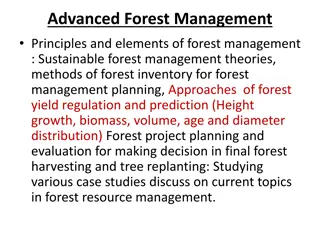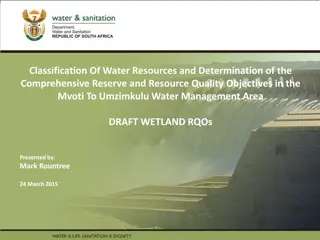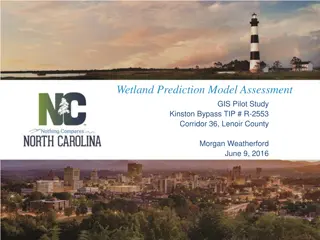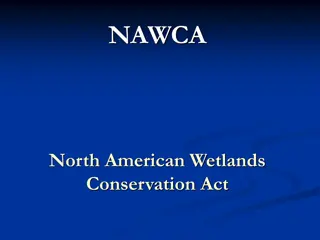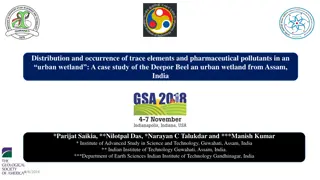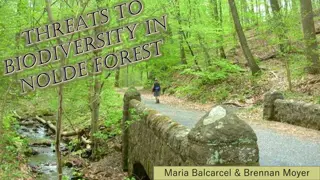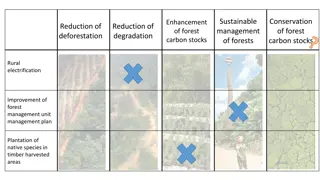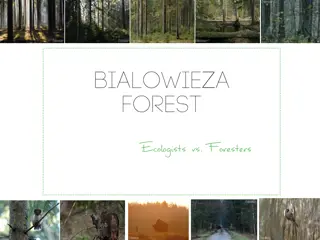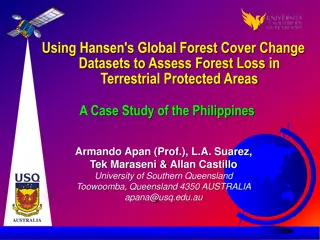Wetland Conservation in Forest Road Construction
Explore the impact of forest road construction on wetland areas and functions in Washington State, assessing if the no net loss policy is achieved through mitigation strategies like avoidance, minimization, restoration, reduction, and replacement. Preliminary questions and study designs aim to characterize wetland-road interactions, quantify changes in wetland functions, and suggest retrospective study designs for assessment.
Download Presentation

Please find below an Image/Link to download the presentation.
The content on the website is provided AS IS for your information and personal use only. It may not be sold, licensed, or shared on other websites without obtaining consent from the author.If you encounter any issues during the download, it is possible that the publisher has removed the file from their server.
You are allowed to download the files provided on this website for personal or commercial use, subject to the condition that they are used lawfully. All files are the property of their respective owners.
The content on the website is provided AS IS for your information and personal use only. It may not be sold, licensed, or shared on other websites without obtaining consent from the author.
E N D
Presentation Transcript
Ash Roorbach CMER Riparian Ecologist CMER Monthly Meeting, July 27, 2010
Determine whether the current Washington State forest practice goal of no net loss of wetland function is being achieved by using a mitigation sequence during road construction and maintenance activities. Mitigation Sequence: 1. Avoid 2. Minimize 3. Restore 4. Reduce 5. Replace
Wetland Area Wetland Function Wetland areas serve several significant functions in addition to timber production: Providing fish and wildlife habitat, protecting water quality, moderating and preserving water quantity. Wetlands may also contain unique or rare ecological systems. (WAC 222-24-010 Policy)
1. How are forest road construction and maintenance activities affecting wetland functions? 2. How are forest road construction and maintenance activities affecting wetland areas and structures?
Preliminary questions: What kinds or types of wetlands? 1. What size wetlands? 2. What kind of road interactions? 3. How is the road or maintenance activity affecting wetland area and structure? 4. Is the road or maintenance activity potentially affecting wetland functions? 5.
1.Characterization of Forest Roads and Wetland Interactions Study (RWI Study) Describe and quantify how roads interact with wetlands. Statewide survey Extrapolate potential risks to wetland functions 2.Function Study (Effectiveness Study) Focus on quantifying changes to wetland functions from forest road construction and maintenance. Use results from the RWI Study Not yet scoped or designed
Cannot find similar study in literature Design Options: 1. Paired treatment reference Too much natural variability between wetlands 2. Before after Limited time frame 3. Retrospective No baseline data to compare treatment effects against
Retrospective study design Characterize and rate qualifying wetlands (i.e. within 200 feet of road) Describe associated road attributes and characteristics Quantify physical relationship between road(s) and wetland(s) (distance, slope, vegetation, drainage, etc.)
Indicators Road in wetland Dead standing vegetation Drift lines in wetland Impoundment Sediment observed in wetland Compacted and rutted soil in and around wetland Invasive species present in and around wetland Slash/debris left in wetland Other? Best professional judgment (when necessary) Is the presence of the indicator a result of road construction or maintenance? Does the indicator represent a potential change to function x?
Pilot Study (DNR Olympic Region) Data collection methods Analytical procedures Site selection methods (including map accuracy) Sample size Costs Useable data Policy action to date: Approved $150,000 fy 2011 Budgeted $157,000 fy 2012
1. CMER review and discussion of pilot study results. 2. Plan and implement statewide Roads and Wetlands Interaction study. 3. Scope and design Function Study to directly investigate road effects on wetland functions. Prioritized wetland functions Before/after design? Controlled treatment?
Pilot Study Plan reviewed by WetSAG Pilot Study Plan in CMER review (seen 2 drafts) Discussion at May 2010 CMER meeting: 1. Finish addressing CMER comments on 2nd draft of Pilot Study Plan. 2. Bring Pilot Study Plan to CMER for (provisional) approval. 3. Develop/refine data collection methods (and analytical procedures) at 5 - 10 sites. 4. Revise/update Pilot Study Plan based on methods development work. 5. Final CMER review/approval. Send Pilot Study Plan to ISPR. 6. Implement Pilot Study at sites in the DNR Olympic Region.
CMER recommendation: 1. Start search for Wetland Specialist and ID other experts. 2. Field trip (and methods test) with Tom Hruby and CMER members. 3. Hire Wetland Specialist to review Pilot Study Plan and lead methods development work at 8 sites and refinement of study plan. 4. Consult with Tom Hruby (lead DOE wetland scientist). 5. Develop analytical methods 6. Refine/update Pilot Study Plan. CMER review. 7. Send Pilot Study Plan to open-review ISPR. Final CMER approval. 8. Implement Pilot Study Plan.
Study plan Finish now or set aside? Wetland specialist Hire before or after ISPR?
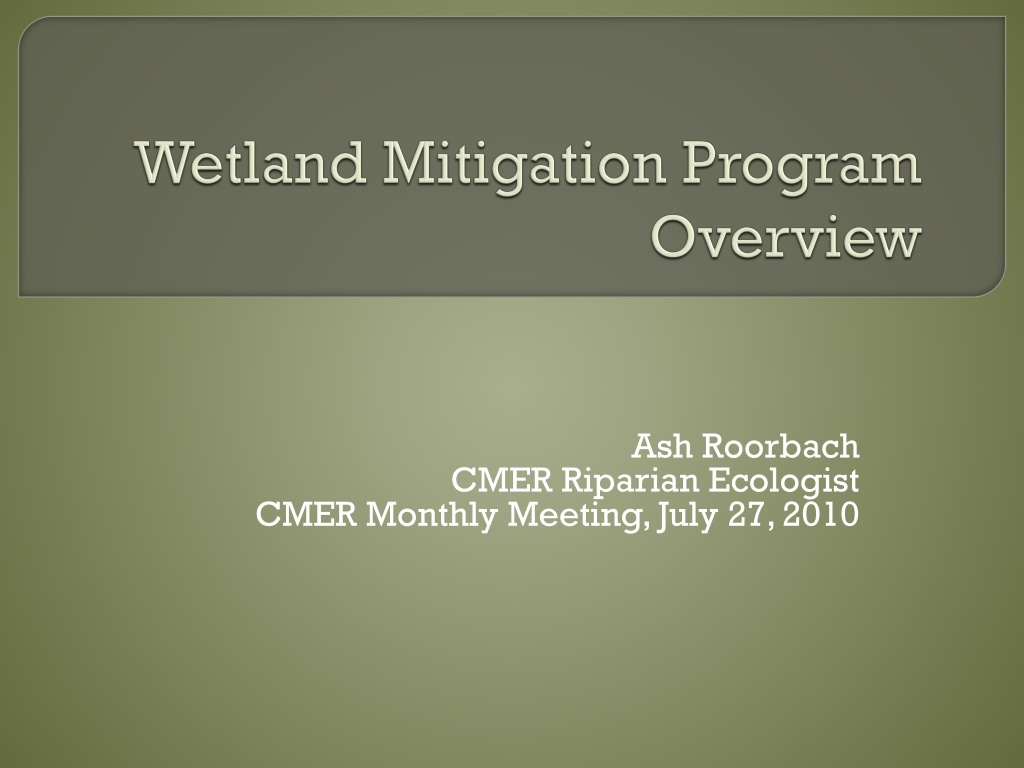
 undefined
undefined







